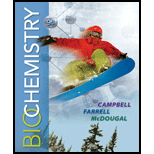
Concept explainers
RECALL What kinds of organisms can fix nitrogen? Which ones cannot?
Interpretation:
The types of organisms that may or may not fix nitrogen is to be determined.
Concept Introduction:
The microorganisms that can convert the atmospheric nitrogen into fixed nitrogen, such as ammonia that is used by the plants are known as nitrogen-fixing organisms. These organisms play an important role in the nitrogen cycle.
Answer to Problem 1RE
Solution: Organisms that can fix nitrogen – symbiotic and non-symbiotic bacteria.
Organisms that cannot fix nitrogen – plants and animals.
Explanation of Solution
Nitrogen fixating bacteria are the prokaryotic microorganisms that can convert nitrogen from the atmosphere into fixed nitrogen compounds that are usable by plants. There are generally two kinds of nitrogen-fixing bacteria. The first kind is symbiotic bacteria that includes Rhizobium, which is associated with the leguminous plants. These bacteria form nodules on the roots of the leguminous plants, such as beans and alfalfa.
The second category includes the non-symbiotic bacteria that includes free-living microbes and cyanobacteria.
Plants and animals cannot fix nitrogen or behave as nitrogen-fixing organisms. But they require nitrogen for their growth and development.
The kind of organisms that may or may not fix nitrogen is determined.
Want to see more full solutions like this?
Chapter 23 Solutions
Owlv2,1 Term Printed Access Card For Campbell/farrell/mcdougal's Biochemistry, 9th
- Draw the reaction between sphingosine and arachidonic acid. Draw out the full structures.arrow_forwardDraw both cis and trans oleic acid. Explain why cis-oleic acid has a melting point of 13.4°C and trans-oleic acid has a melting point of 44.5°C.arrow_forwardDraw the full structure of the mixed triacylglycerol formed by the reaction of glycerol and the fatty acids arachidic, lauric and trans-palmitoleic. Draw the line structure.arrow_forward
- Draw out the structure for lycopene and label each isoprene unit. "Where is lycopene found in nature and what health benefits does it provide?arrow_forwardWhat does it mean to be an essential fatty acid? What are the essential fatty acids?arrow_forwardCompare and contrast primary and secondary active transport mechanisms in terms of energy utilisation and efficiency. Provide examples of each and discuss their physiological significance in maintaining ionic balance and nutrient uptake. Rubric Understanding the key concepts (clearly and accurately explains primary and secondary active transport mechanisms, showing a deep understanding of their roles) Energy utilisation analysis ( thoroughly compares energy utilisation in primary and secondary transport with specific and relevant examples Efficiency discussion Use of examples (provides relevant and accurate examples (e.g sodium potassium pump, SGLT1) with clear links to physiological significance. Clarity and structure (presents ideas logically and cohesively with clear organisation and smooth transition between sections)arrow_forward
- 9. Which one of the compounds below is the major organic product obtained from the following reaction sequence, starting with ethyl acetoacetate? 요요. 1. NaOCH2CH3 CH3CH2OH 1. NaOH, H₂O 2. H3O+ 3. A OCH2CH3 2. ethyl acetoacetate ii A 3. H3O+ OH B C D Earrow_forward7. Only one of the following ketones cannot be made via an acetoacetic ester synthesis. Which one is it? Ph کہ A B C D Earrow_forward2. Which one is the major organic product obtained from the following reaction sequence? HO A OH 1. NaOEt, EtOH 1. LiAlH4 EtO OEt 2. H3O+ 2. H3O+ OH B OH OH C -OH HO -OH OH D E .CO₂Etarrow_forward
- what is a protein that contains a b-sheet and how does the secondary structure contributes to the overall function of the protein.arrow_forwarddraw and annotate a b-sheet and lable the hydrogen bonding. what is an example that contains the b-sheet and how the secondary structure contributes to the overall function of your example protein.arrow_forwardFour distinct classes of interactions (inter and intramolecular forces) contribute to a protein's tertiary and quaternary structures. Name the interaction then describe the amino acids that can form this type of interaction. Draw and annotate a diagram of the interaction between two amino acids.arrow_forward
 BiochemistryBiochemistryISBN:9781305961135Author:Mary K. Campbell, Shawn O. Farrell, Owen M. McDougalPublisher:Cengage Learning
BiochemistryBiochemistryISBN:9781305961135Author:Mary K. Campbell, Shawn O. Farrell, Owen M. McDougalPublisher:Cengage Learning
